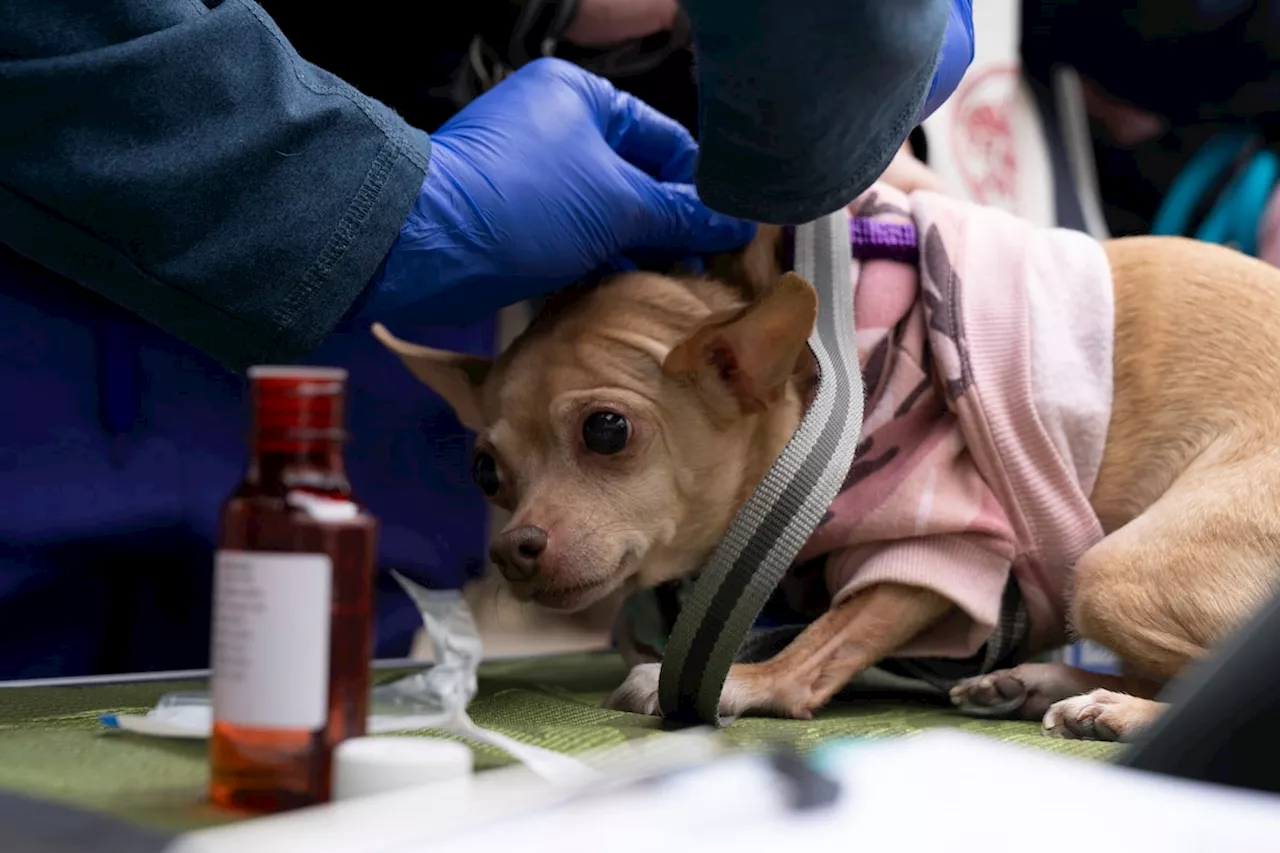This year's Iditarod Trail Sled Dog Race is marked by a record-breaking length due to a lack of snow, forcing organizers to reroute the traditional course. Despite the iconic race's enduring appeal, participation has declined, raising concerns about its future.
The Iditarod Trail Sled Dog Race , a grueling test of endurance for both mushers and their canine companions, is set to begin with a ceremonial start in Anchorage, Alaska , on Saturday, March 2, 2024. However, this year's race will be unlike any other due to a lack of snow, forcing organizers to alter the traditional route and increase the overall distance.
Teams will now face a daunting 1,128 miles (1,815 kilometers) trek to the finish line in Nome, a significant increase from the usual 1,000 miles (1,609 kilometers). This unprecedented length is a consequence of a snow deficit in the Anchorage area, causing the ceremonial start to be shortened and necessitating a reroute to bypass snow-free sections of the trail. Despite the challenges posed by climate change, animal rights concerns, and economic pressures, the Iditarod continues to attract participants who are drawn to the spirit of adventure and the legacy of this iconic race. This year's event, however, sees a decline in the number of mushers, tying with 2023 as the lowest in the race's history. The dwindling participation raises concerns about the future viability of the Iditarod, a race that holds a special place in Alaska's cultural heritage.The race commemorates the 1925 Serum Run, a heroic effort in which sled dog teams transported diphtheria antitoxin from Nenana to Nome, saving countless lives during a deadly outbreak. Each musher needs a minimum of 12 dogs to start the race, with a maximum of 16 allowed along the trail, potentially totaling up to 528 canine athletes traversing the Alaskan wilderness. The ceremonial start in Anchorage, a tradition that usually involves teams running through 11 miles (17.7 kilometers) of city streets, has been scaled back to less than two miles (3.2 kilometers) this year due to the snow shortage. Throughout the race, mushers and their dogs will rely on approximately 100,000 booties to protect their paws from the harsh conditions, while checkpoints along the route provide much-needed supplies, including 180,000 pounds (81,647 kilograms) of dog food
News Alaska Iditarod Sled Dog Race Alaska Musher Dog Snow Climate Change Record Length Participation Decline
Canada Latest News, Canada Headlines
Similar News:You can also read news stories similar to this one that we have collected from other news sources.
 Iditarod Trail Sled Dog Race Embarks on its Longest Journey YetThe Iditarod Trail Sled Dog Race, a world-renowned event, faces its longest course ever due to a lack of snow, testing the endurance of mushers and their canine teams. The race also grapples with declining participation and the challenges of climate change.
Iditarod Trail Sled Dog Race Embarks on its Longest Journey YetThe Iditarod Trail Sled Dog Race, a world-renowned event, faces its longest course ever due to a lack of snow, testing the endurance of mushers and their canine teams. The race also grapples with declining participation and the challenges of climate change.
Read more »
 The world's most famous sled dog race is longer than ever. Here's a look at Iditarod, by the numbersThe world’s most famous sled dog race is longer this year than ever before.
The world's most famous sled dog race is longer than ever. Here's a look at Iditarod, by the numbersThe world’s most famous sled dog race is longer this year than ever before.
Read more »
 Dogs sit and stay to get vaccinated against parvovirus at San Francisco free clinicParvovirus attacks the stomach and intestines of dogs and is spread by dog-to-dog contact
Dogs sit and stay to get vaccinated against parvovirus at San Francisco free clinicParvovirus attacks the stomach and intestines of dogs and is spread by dog-to-dog contact
Read more »
 Dog Found Abandoned and Tied to a Pole in Georgina Dog ParkPolice are investigating after a dog was found abandoned and tied to a pole in a Georgina dog park.
Dog Found Abandoned and Tied to a Pole in Georgina Dog ParkPolice are investigating after a dog was found abandoned and tied to a pole in a Georgina dog park.
Read more »
 Dog Found Abandoned and Tied to Pole in Georgina Dog ParkA Cane Corso was found tied to a pole in a Georgina dog park, leading to an investigation by York Regional Police for animal cruelty.
Dog Found Abandoned and Tied to Pole in Georgina Dog ParkA Cane Corso was found tied to a pole in a Georgina dog park, leading to an investigation by York Regional Police for animal cruelty.
Read more »
 Youth killed after being towed on sled behind truck in VaughanPolice in York Region are warning the public not to tow people behind vehicles, after a young person was fatally injured while being towed on a sled.
Youth killed after being towed on sled behind truck in VaughanPolice in York Region are warning the public not to tow people behind vehicles, after a young person was fatally injured while being towed on a sled.
Read more »
